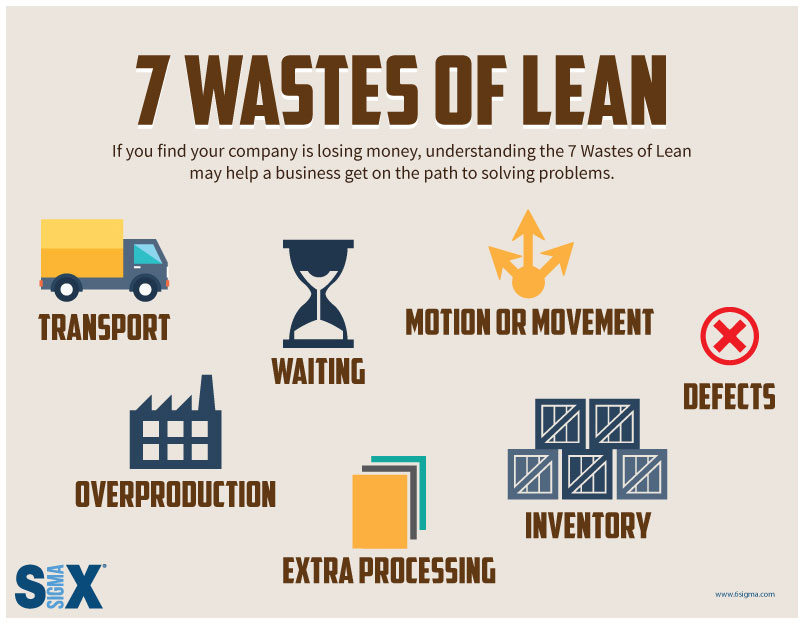Do you understand the seven wastes of Lean Six Sigma? This infographic provides a colorful look at the principles.
Transport: Remember if it is not adding value to your product or service, it is waste. So moving materials or moving the product itself that is not required is considered waste. The primary reason is because the more you move, there is an increased chance for damage or injury.
Waiting: In business as in life, any kind of waiting is considered waste. If a staff member’s hands are at a standstill, that is a waste of that resource. There are many reasons this could happen, some of which are unbalanced workloads, more instruction needed due to staff shortages, or poorly designed work processes.
Motion or Movement: Any movement of a staff member that is not required to get the job done is major waste. This would include unnecessary bending, lifting, reaching, walking, turning or kneeling. Furthermore, if there is any adjustment that has to be made before production can take place, then something is wrong with the design of the process. If the adjustment does not add value, the adjustment takes away valuable production time.
Overproduction: Producing too much product is never a good idea and a big form of waste. Now that you have excess product, you need a place to store it. You will have to rent a storage space or warehouse. But what if that excess product doesn’t sell? Now you are stuck trying to sell it at a discount, which means loss of profits. Also affected is cash flow, because of the materials and manpower you had to pay for to make the excess product.
Extra Processing: Any processing that does not add value to your product, especially when it is a result of outdated or inadequate technology or communications. If necessary packaging is not included in the original processes, or if customer doesn’t require excess packaging because it affects the quality of the product and it is still done, this is major waste.
Inventory: Inventory itself does not add value. You may need it to manage shortages between demand and production, but inventory itself does not add value. In fact, inventory takes up space, financial resources, and the quality of your product could become compromised. In fact, inventory covers up sins that should be examined closer.
Defects: If you have to go back and fix a defect or do a correction, that is a waste. It should be done right the first time, and every time thereafter. That is the purpose of both Six Sigma and Lean Six Sigma and their tools.
If you would like more information on the seven wastes of lean six sigma, sign up for our Lean Six Sigma training courses or services. Please click here for more information.










No responses / comments so far.